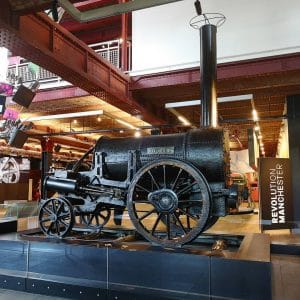
Work has started at the Science and Industry Museum to create a new 725 square metre flexible gallery space.
The project, which is set to open in October 2020, will reveal striking historic spaces previously not open to the public on the lower ground floor of the Grade II Listed New Warehouse.
Director Sally MacDonald said:
“This new gallery will originate and host some of the world’s best science exhibitions and help establish the Science and Industry Museum as a beacon for contemporary science and major cultural destination in the coming years.
In revealing this incredible new space, we can’t wait to inspire visitors year-round with more ideas that have changed the world and start to open up new areas of our globally important site.”
The New Warehouse was built in 1882 to provide storage for the Great Western Railway and designed to support the weight of steam trains entering the Warehouse and unloading the cargo through ceiling hatches.
Used as museum stores until recently, the historic fabric of the lower ground floor will be revealed and restored, allowing visitors to the museum to experience the grandeur and scale of the original warehouse space while enjoying new exhibition experiences. The industrial spaces have thick brick walls with steel and brick ‘jack arch’ ceilings.
The Special Exhibitions Gallery is designed by award-winning architectural practice Carmody Groarke whose recent projects include the critically acclaimed Windermere Jetty Museum, and the Maggie’s Cancer Care Centre in Liverpool.

The rest of the museum will remain open with an ongoing programme of special exhibitions, experiences and events including current exhibition The Sun. The Power Hall is also currently undergoing restoration and is due to reopen in 2021.
The Science and Industry Museum tells the story of where science met industry and the modern world began. Manchester was one of the first global industrial cities, and its epic rise, decline and resurrection has been echoed in countless other cities around the world.
From textiles to computers, the objects and documents on display in the museum tell stories of everyday life over the last 200 years, from light bulbs to locomotives. The museum’s mission is to inspire all its visitors, including future scientists and inventors, with the story of how ideas can change the world, from the industrial revolution to today and beyond.
The museum is on the site of the Liverpool Road Station terminus of the Liverpool Manchester Railway, the world’s first purpose-built passenger railway. Among its internationally significant buildings are the world’s first passenger railway station and the oldest existing railway goods warehouse. In total there are two Grade I listed buildings and four Grade II listed buildings on the site.


